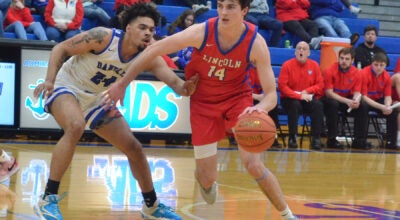Prevent burnout by playing multiple sports
Published 6:37 pm Thursday, January 18, 2018
By KATE STORMS
Danville Athletic Trainer
From high school teams to AAU to summer league, there seems to be an epidemic of adolescent athletes playing one sport year-round and it causes great concern in the world of athletic training.
There is no doubt that athletes develop a love for one sport above all else by the time their high school years approach. However, love for the game may not be enough to keep an adolescent mind or body healthy throughout their years of teenage development.
There are many reasons to avoid playing one sport all year at a young age and they include very important things like a healthy body, healthy social skills and, of course, a healthy mind.
It’s no secret that athletes in certain sports are more likely to sustain certain injuries: For example, football has concussions, soccer has knee injuries and baseball has elbow or shoulder issues that plague its athletes.
Along with specific incidences, there is also a natural rise in injury when you increase the amount of playing time during a single sport with the same movements and stresses on the body. One study showed that athletes who specialize in one sport have a 70-percent greater chance of suffering an injury than those who play multiple sports.
When an athlete focuses on just one sport, there is a greater demand on muscles, tendons, ligaments and bones in the same pattern, increasing the breakdown of those structures at a greater rate.
Often times an injury sustained in football, such as a muscle strain, will not carry over to basketball season because the demands asked of that muscle are different and it gives it a chance to rest and recover. Playing club and high school sports can often lead to an exposure issue, which is what sparked the need for pitch counts in adolescent pitchers.
The more throws, shots or kicks that an athlete makes, the more they increase the chance of injury just because of the sheer number of times that motion was completed. Or if they happen to play two leagues of the same sport simultaneously they’re more likely to get burnt out or injured from fatigue. Even professional level athletes have an off season, and their bodies are fully developed and not at as great of a risk of injury or breakdown as a teenager.
With different sports teams come different types of people. Kids start sports for all sorts of reasons, and sometimes it has to do with their relationships with their friends. Many athletes can benefit from running track and field, or at least doing their workouts to stay in shape for their main focus. There is an added benefit of multiple sport athletes to stay away from social burnout with one set of teammates or type of athletes.
The mental burnout that is often associated with year-round players at a young age is something that can be difficult to overcome. Along with the potential of burnout there is also the notion that without one given sport a young adolescent has a hard time dealing or coping with life.
If an adolescent basketball player were to sustain a season-ending injury, but had no idea how to do other things outside of basketball it would be difficult for them to cope, and self-identify with sitting on the bench and not being able to contribute.
Sports psychology looks largely at how athletes identify themselves and how injuries can create a large roadblock to their psychological development. Depression and anxiety can come from situations like this, at least for short term and can then lead to a back-and-forth battle of recovery mentally and physically for the young athlete.
There tends to be a common notion that if an athlete takes an “off-season” of their intended sport that college coaches will not see them, or they will not get the same looks as their peers on club teams year-round.
Although there may be a possibility of that, many college coaches encourage their young prospective athletes to play multiple sports. According to one article, 71-percent of Division-I football players, 83-percent of Division-I lacrosse players, and 87-percent of Division-I runners were multi-sport athletes in their adolescence.
These athletes have reported less pressure, less burnout, and less overuse injuries over their time of participation in sports. They have also discovered that these athletes are more likely to develop skills that can transfer between sports to include improving hand-eye coordination, balance, endurance and athletic agility.
Although some sports tend to peak at very young ages like gymnastics, it’s worth considering encouraging a young athlete to expand their horizons instead of limiting them so early.
The articles I used for statistics were: A study funded by the National Federation of State High School Associations (Injury Rates Higher for Athletes Who Specialize in One Sport) and A few surprises in the data behind single-sport and multisport athletes in USA Today.






